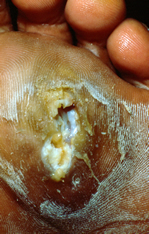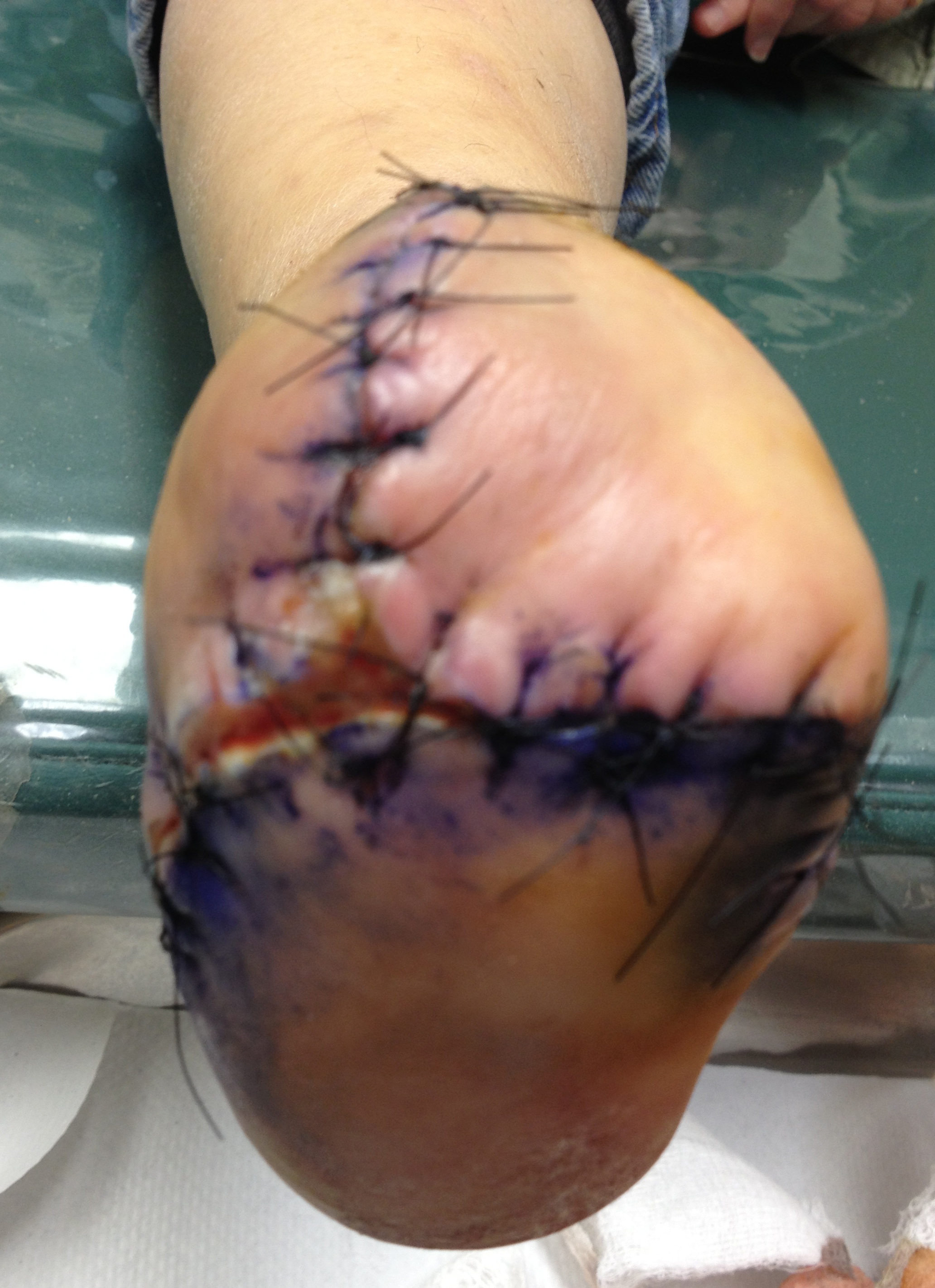

The skin is a large sensory organ that interacts with the environment, and sends signals to the brain about touch, pain, vibration, and position. There are two layers of skin that cover the body, the epidermis and dermis. The epidermis is the outermost layer of skin, the part that can be seen, and is very active with new skin cells being formed and gradually being shed. The dermis is the deeper layer of skin. It has two layers that are responsible for supporting the epidermis.
Wounds occur when the skin is broken or damaged because of injury. Causes of injury may be the result of mechanical, chemical, electrical, thermal, or nuclear sources. The skin can be damaged in a variety of ways depending upon the mechanism of injury. Proper wound care is necessary to prevent infection, assure there are no other associated injuries, and to promote healing of the skin. An additional goal, if possible, is to have a good cosmetic result after the wound has completely healed.
The primary goal in the treatment of foot ulcers is to obtain healing as soon as possible. The faster the healing, the less chance for an infection. There are several key factors in the appropriate treatment of a diabetic or non diabetic foot ulcer:
If your ulcer is infected a treatment plan of appropriate antibiotics, woundcare and possibly hospitalization might be necessary. To keep an ulcer from becoming infected, it is important to:

Wounds occur when the skin is broken or damaged because of injury. Causes of injury may be the result of mechanical, chemical, electrical, thermal, or nuclear sources. The skin can be damaged in a variety of ways depending upon the mechanism of injury.

The major factors for wound healing include strict glucose control.Southfield wound care When the sugar levels are high the bodies natural defense mechanisms are impaired. We also know we need to have oxygen to heal. If the circulation is not adequate a vascular referral is indicated. New interventional procecures help get oxygen to the ulcer to increase chance of healing. Ulcers, especially those on the bottom of the foot, must be “off-loaded.” You may be asked to wear special footgear, padding or a brace, specialized castings, or use a wheelchair or crutches. These devices will reduce the pressure and irritation to the area with the ulcer and help to speed the healing process. The last thing is the use of the proper wound dressings. Every wound is inspected for jagged or torn edges, bleeding or oozing, abnormal discoloration, tenderness or pain, temperature of wound site and surrounding area, swelling, pus, foul odor, type of tissue in the wound and depth and exrent of the wound.
The science of wound care has advanced significantly over the past ten years. The old thought of “let the air get at it” is now known to be harmful to healing. We know that wounds and ulcers heal faster, with a lower risk of infection, if they are kept covered and moist. The use of full-strength betadine, hydrogen peroxide, whirlpools, and soaking are not recommended, as these practices could lead to further complications.
Appropriate wound management includes the use of dressings and topically-applied medications. Products range from normal saline to growth factors, ulcer dressings, and skin substitutes that have been shown to be highly effective in healing foot ulcers.
For a wound to heal, there must be adequate circulation to the ulcerated area. Your podiatrist can determine circulation levels with noninvasive tests.
Tightly controlling blood glucose is of the utmost importance during the treatment of a diabetic foot ulcer. Working closely with a medical doctor or endocrinologist to control blood glucose will enhance healing and reduce the risk of complications.
The best way to treat a diabetic foot ulcer is to prevent its development in the first place. Recommended guidelines include seeing a podiatrist on a regular basis. Your podiatrist can determine if you are at high risk for developing a foot ulcer and implement strategies for prevention. You are at high risk if you have or do the following:

Reducing additional risk factors, such as smoking, drinking alcohol, high cholesterol, and elevated blood glucose, are important in prevention and treatment of a diabetic foot ulcer. Wearing the appropriate shoes and socks will go a long way in reducing risks. Your podiatrist can provide guidance in selecting the proper shoes.
Learning how to check your feet is crucial so that you can find a potential problem as early as possible. Inspect your feet every day—especially the sole and between the toes—for cuts, bruises, cracks, blisters, redness, ulcers, and any sign of abnormality. Each time you visit a health-care provider, remove your shoes and socks so your feet can be examined. Any problems that are discovered should be reported to your podiatrist as soon as possible; no matter how simple they may seem to you.
The key to successful wound healing is regular podiatric medical care to ensure the following “gold standard” of care.
Phone: